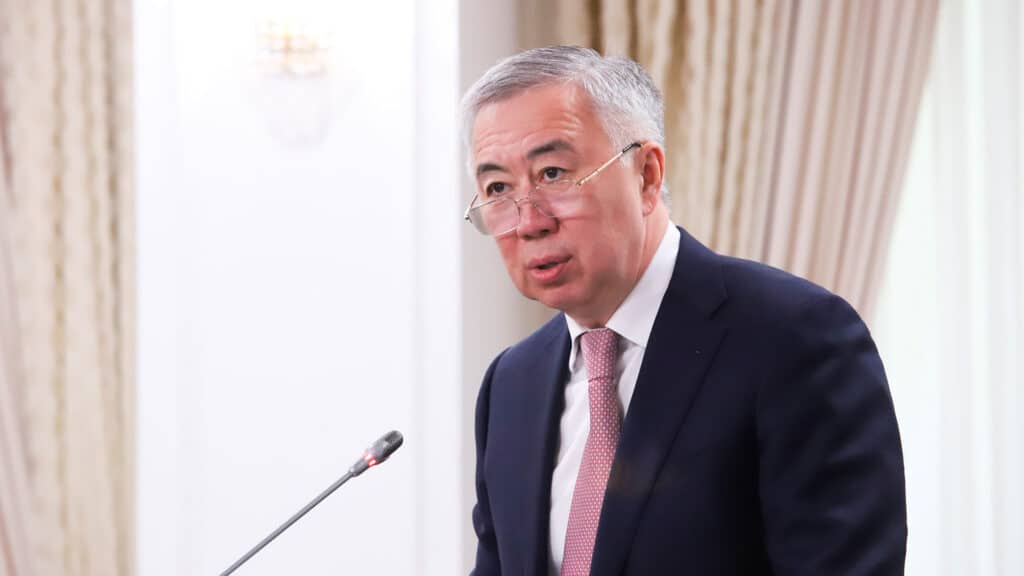Kazakhstan slashes VAT threshold and sets new 16% rate

Kazakhstan’s proposed tax reform introduces a differentiated value-added tax (VAT) system, according to Serik Zhumangarin, minister of national economy. The standard VAT rate will be 16%, with a reduced rate of 10% under consideration for the healthcare sector. Agricultural producers will be exempt from VAT.
«We are proposing a reduced rate for the healthcare sector, but further discussions are needed to determine whether it will apply to other industries. We will gather proposals, conduct calculations and make a final decision in collaboration with experts and businesses,» Zhumangarin stated at a government briefing.
He also explained why the cabinet suggests implementing only one reduced VAT rate of 10%.
«This is due to the complexity of tax administration. Multiple rates create challenges for businesses and tax authorities, complicating accounting and tax filings while leading to the accumulation of debit balances. To streamline the process, we propose a simplified structure: 16%, 10%, 0% and exemptions,» he noted.
Zhumangarin highlighted that VAT is a key revenue source, contributing 25% of total budget receipts. However, only 4% of enterprises in Kazakhstan currently pay VAT, as many businesses deliberately split operations to remain under the registration threshold and avoid taxation.
«To address this, we propose lowering the VAT registration threshold from 80 million tenge to 15 million tenge (approximately $30,000). This would create a situation where the costs of business splitting outweigh the benefits, fostering a fairer business environment and reducing tax evasion,» he added.
Zhumangarin remarked that the Ministry of National Economy is adhering to international best practices in setting the VAT registration threshold. He cited examples from Canada, South Korea, Scandinavian countries, several Eastern European nations, Russia, Uzbekistan and Kyrgyzstan, where the thresholds are lower than in Kazakhstan.
«Notably, the potential inflationary impact of raising taxes will be short-term and is expected to subside within a year. Additional inflation is estimated to be up to 3%,» he noted.
The minister added that the increase in tax revenues is projected to generate approximately $8 to $10 billion annually. Earlier estimates suggested that if the VAT rate were raised to 20%, the budget would receive an additional $10 to $13 billion, with inflation accelerating by 4.5%.
According to Zhumangarin, these additional funds will help Kazakhstan reduce its reliance on the National Fund, lower public debt and allocate more resources to infrastructure development, the agribusiness sector, manufacturing and defense.
He also discussed proposed changes to the retail tax regime. The cabinet plans to maintain the existing system, keeping the income limit at 600,000 monthly calculation indexes (approximately $4.5 million) while removing restrictions on the number of employees. For businesses with an annual income of 100 million tenge (nearly $196,000), payroll expenses will be deductible. The tax rate will remain at 4%, with maslikhats (local councils) having the option to reduce it by up to 50%. However, only businesses providing services directly to consumers (B2C segment) will qualify for the regime.
«The regime is called retail, so it must live up to its name. Only direct sales to the population are factored in,» Zhumangarin emphasized.
On Feb. 7, during a meeting with major business leaders, President Kassym-Jomart Tokayev stated that the proposed 20% VAT rate was too high and directed the cabinet to implement a differentiated tax rate instead.
Zhumangarin initially announced the cabinet’s plan to raise the VAT rate from 12% to 20% and lower the VAT registration threshold from 78.6 million to 15 million tenge at an extended government meeting on Jan. 28.

